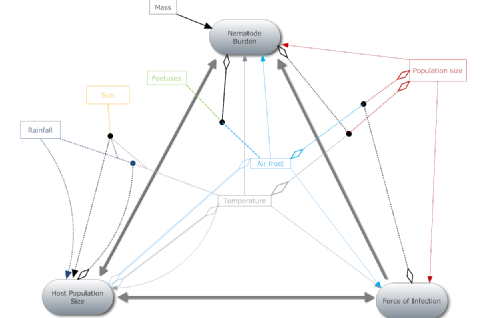Undergraduate project
A Network of Factors Influence Host-Parasite Dynamics in a Wild Rabbit Population
Andrew S. Walker
Supervised by: Dr Stephen Cornell, Faculty of Biological Sciences, University of Leeds. LS2 9JT
ABSTRACT
Host-parasite systems present a wide and varied array of interactions, some of the most complex of which relate to the immune response of the host, especially in light of concomitant infection by several species. These systems are highly fluid, with strong influence born from the abiotic conditions in which they are based. This report studies a detailed, long-term dataset on a wild European rabbit population (Oryctolagus cuniculus) and its gastrointestinal nematode parasite Trichostrongylus retortaeformis. The effects of the parasite on the rabbit population are investigated, as well as the abiotic factors which affect both the distinct populations, and their various interactions. A series of General Linear Models allow for the quantification of the influence of these factors on the nematode burden, Force of Infection, and host population size. Significant main and interactive effects support a number of interesting arguments, many of which concern the intertwined life-history strategies of the species. These are often related to the survival of those individuals most sensitive to environmental conditions: kittens and free-living nematodes. The consequences of myxomatosis and Rabbit Haemorrhagic Disease are considered, as is the effect of bearing young. These results stand to support the importance of abiotic conditions in host-parasite interactions, and well as exposing their complex coevolutionary characteristics.

The network of factors found by the project to be significant determinants of host population size, force of infection and nematode burden.
Full text available upon request - A dot S dot Walker at warwick dot ac dot uk
